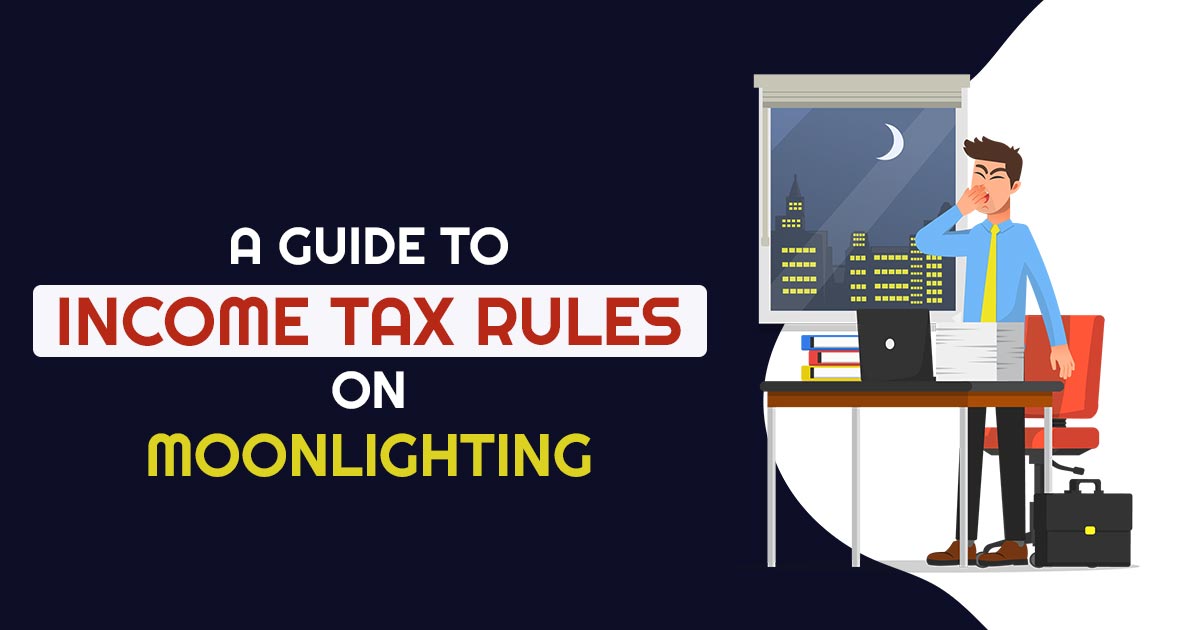
The IT giants like Infosys, Wipro, and TCS question moonlighting. Moonlighting has increased amid covid-19.
Simple to Understand Moonlighting
It is described as taking another job in addition to primary employment. The other job has been chosen without taking any permission from the primary job. Some tax implications might interrupt through moonlighting IT heads cautioned.
What Tax Implications Emerge from Moonlighting?
It shall result in complicated tax circumstances which are obligated to be aware by the assessee.
Business Income or Professional Fees Included in Moonlighting Income
Under the head ‘PGBP-Profits and Gains from Business and Profession,’ the business income or professional fees might get taxed. The expenses made during the other job like laptop depreciation, travel costs etc could be treated as business expenses and shall get diminished from their income. The left amount would get provided to tax with the relevant slab rates. When the tax subjected to be paid is more than Rs 10,000 then the assessee should pay advance tax in four instalments of 15%, 45%, 75%, and 100%.
In other terms when the other job would be one of the professions which have been listed in section 44ADA of the income tax act along with the income would be lower than Rs 50 lakhs, the assessee would have the choice to file the tax merely on 50% of their income. They could not empower to claim the expenses in the same cases since they obtained a flat 50% reduction. Indeed they need to pay exclusively the last instalment of the advance tax dated 31st March.
Salary Obtained from Moonlighting Income
When the assessee obtains their income from the other source as salary then the same can make the tax computations complicated and the assessee might need to be cautious during furnishing the returns. For deducting the TDS the employers can ask for the estimated taxable income. In the approximation, both employers recognize the standard deduction of Rs 50,000 which the assessee could claim once. They might acknowledge the 80C tax deduction that increases the maximum limit of Rs 1.5 lakhs. During the furnishing of the taxes, the assessee would need to incur these amendments and face the problems of the other taxes and interests. To prevent the same the assessee should calculate the total taxes minus the tax deducted (TDS) via the employer and file the balance as advance tax instalments. The below table could illustrate things effectively
| Computation of Income Tax | Salary from Employer A | Salary from Employer B | Final Tax Computation |
|---|---|---|---|
| Salary Income (after a standard deduction of Rs. 50,000) | 15,00,000 | 6,00,000 | 21,50,000 (15,50,000+6,50,000-50,000 |
| Less: Deduction u/s 80C | 1,50,000 | 1,00,000 | 1,50,000 (Maximum tax deduction under Section 80C is only Rs. 1,50,000) |
| Total taxable income | 13,50,000 | 5,00,000 | 20,00,000 |
| Excess tax payable on | – | – | 1,50,000 |
For the mentioned case the TDS has been deducted via the employers on a total income of Rs 18,50,000. While the tax would be subjected to be paid on Rs 20,00,000. The assessee should file the advance tax on an additional income of Rs 1,50,000. If the assessee does not do then he or she shall be required to file the tax on Rs 1,50,000 along with interest.